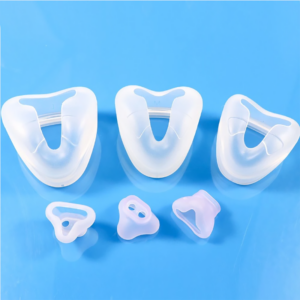Do you all remember when COVID-19 was in serious condition? Back then, masks were very expensive, whether they were medical silicone masks or regular masks, they were particularly expensive. As soon as the masks were produced, they would soon be snapped up, so the medical industry was very hot at that time. But in addition to protective clothing, medical gloves are also very hot. And today’s topic is to briefly introduce Personal Protective Equipment (PPE). I want to let you know that even though the epidemic is over, there are still occasions when you need to use these things. So let’s take a look.
Personal Protective Equipment (PPE) encompasses various items such as face shields and gloves designed to safeguard individuals from injuries and the transmission of infections. When utilized correctly, PPE acts as a barrier, preventing the transmission of bodily fluids and pathogens. Gloves, a crucial component of PPE, find increased usage in healthcare settings, especially when handling patients under transmission-based precautions or dealing with potentially infectious materials.
 Despite the essential role of gloves in infection prevention, there are instances of their inappropriate use. Disposable gloves should only be worn when there is a reasonable assumption of contact with contaminated surfaces or equipment. Improper removal of gloves poses a risk of infection transmission, emphasizing the importance of adherence to guidelines.
Despite the essential role of gloves in infection prevention, there are instances of their inappropriate use. Disposable gloves should only be worn when there is a reasonable assumption of contact with contaminated surfaces or equipment. Improper removal of gloves poses a risk of infection transmission, emphasizing the importance of adherence to guidelines.
In healthcare settings, PPE is not only crucial for medical staff but also for patients, visitors, and those involved in direct patient care. Masks, including high-quality medical masks, play a pivotal role in reducing the risk of disease transmission. Face coverings are particularly emphasized to prevent asymptomatic individuals from unknowingly spreading infections.
The choice of protective clothing, including face masks, respirators, gloves, and face coverings, is determined by safety risks, standards, and safety regulations. Medical professionals must adhere to guidelines, especially when caring for patients with confirmed or suspected diagnoses, requiring the use of face masks, plastic aprons, gloves, and other protective gear. In non-clinical situations, individuals may be advised to wear face masks, emphasizing their effectiveness in disease prevention.
The Health Protection Agency recommends the use of face masks for flu sufferers and healthy individuals caring for them in non-clinical settings. In hospitals, where aerosol-generating procedures are performed, additional protection, such as FFP3 respirators, may be necessary. Medical protective clothing, encompassing various components, is indispensable for safeguarding both medical personnel and patients.
![]() Ultimately, the proper selection and use of PPE are critical elements in maintaining a safe healthcare environment and preventing the spread of infections.
Ultimately, the proper selection and use of PPE are critical elements in maintaining a safe healthcare environment and preventing the spread of infections.
Although COVID-19 has passed, we still need to raise our precautionary awareness on specific occasions and remember to wear the appropriate protective gear. That’s all for today, see you in the next issue!